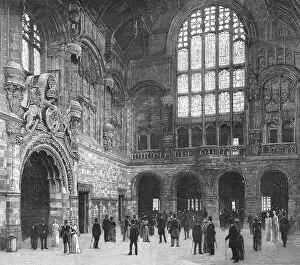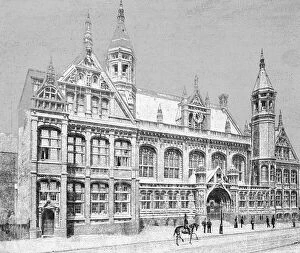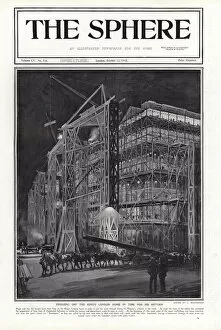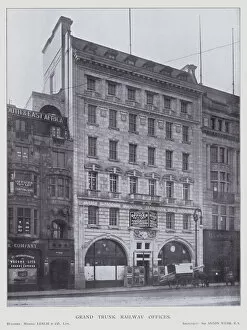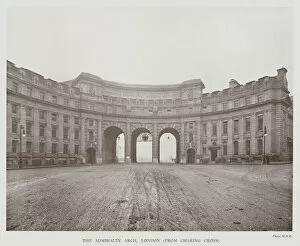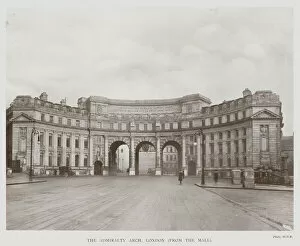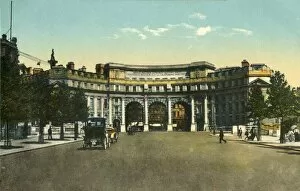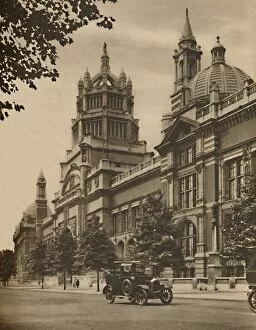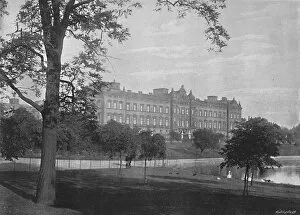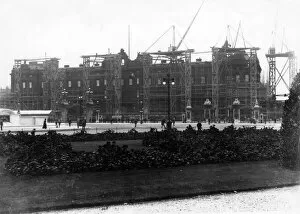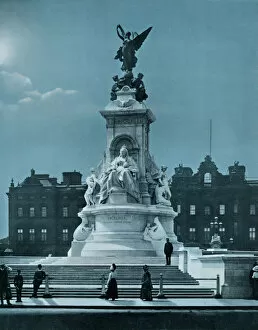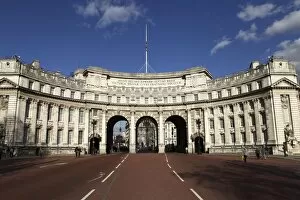Sir Aston Webb Collection
Sir Aston Webb was a renowned British architect who left an indelible mark on the architectural landscape of London and beyond
For sale as Licensed Images
Choose your image, Select your licence and Download the media
Sir Aston Webb was a renowned British architect who left an indelible mark on the architectural landscape of London and beyond. His talent for remodelling and designing iconic structures is evident in his work, including the grand facade of Buckingham Palace in 1913. This lithograph captures the transformation of this historic landmark under Webb's vision. Webb's influence extended to South Kensington, where he designed the impressive New Royal College of Science. A photograph showcases its majestic presence, standing as a testament to Webb's ability to create buildings that exude both elegance and functionality. The Grand Trunk Railway Offices stand as another example of Webb's mastery. The black-and-white photo reveals a building that seamlessly blends classical elements with modern design, showcasing his versatility as an architect. Two photographs capture different perspectives of Admiralty Arch, one from Charing Cross and another from the Mall. These monochromatic images highlight Webb's skill in creating monumental arches that serve as gateways to important landmarks within London. Webb also made significant contributions to the Victoria and Albert Museum. A lithograph displays his meticulous ground plan for this cultural institution while two black-and-white photos reveal intricate details such as the East Staircase and Vestibule in Eastern Court. In addition to these notable works, Sir Aston Webb even ventured into other realms like locksmithing. A photograph depicts his Locksmiths Shop from 1924, showcasing yet another facet of his creative abilities. Throughout his career, Sir Aston Webb demonstrated an unwavering commitment to excellence in architecture. Whether it was transforming Buckingham Palace or leaving a lasting impression on iconic structures like Admiralty Arch or Victoria and Albert Museum, he shaped London's skyline with timeless designs that continue to inspire awe today.

